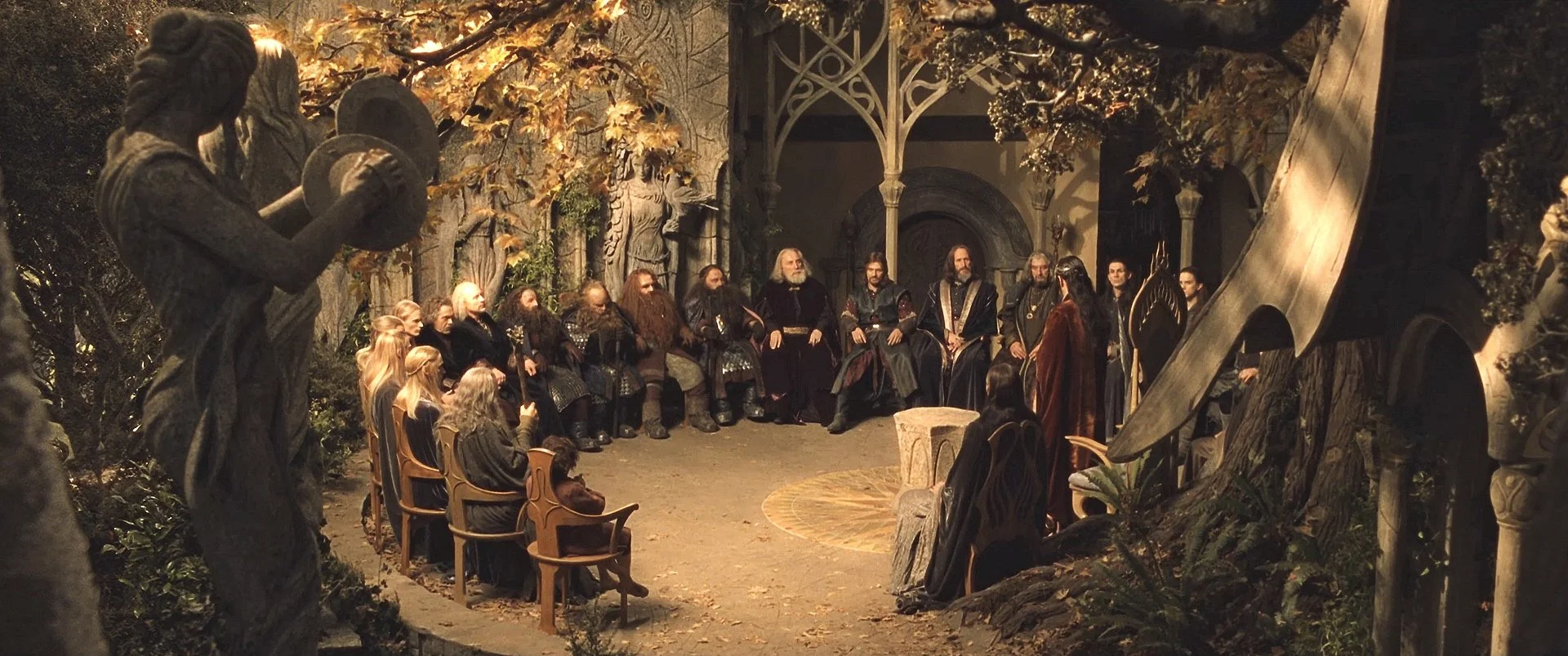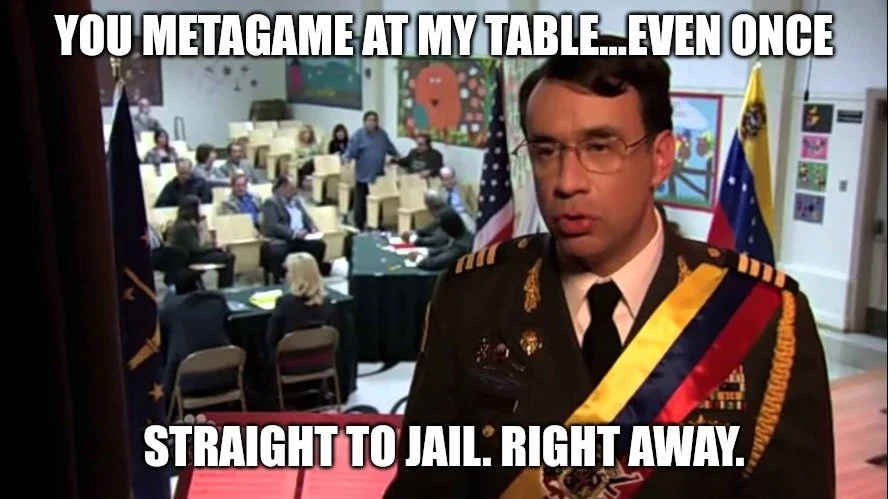How to Run a Successful Session Zero
You’ve read all the rulebooks. You bought a nice set of dice, or ten. You’ve been running through all the cool monsters you’re going to throw at your party and the unique encounters you will craft. You have an idea of the world that you want to run it in. You have a handful of friends who heeded your call to adventure and have agreed that they want to play Dungeons and Dragons on a regular basis. You’re oh, so, close to a world of boundless imagination and epic adventures.
But before the quests, battles, and mysteries begin, there's a crucial step that sets the stage for the perfect campaign: Session Zero. This guide will walk you through the essentials of running a Session Zero that's geared towards collaboration, setting expectations, and creating a safe and comfortable space for everyone at the table.
What is a Session Zero? A Session Zero is an initial meeting before a campaign begins where the Dungeon Master and players gather to collaboratively set expectations, discuss campaign themes, establish character connections, introduce safety tools, and outline rules. It's also a great time to build excitement and camaraderie among the players, especially if you’re bringing together a group who maybe doesn’t know each other that well. Think of it as the creation of The Fellowship of the Ring in Rivendell, and you’re Elrond.
That’s you over there on the right
Step 1: Fellowship:
You can choose to skip this step if the group you’re playing with is already a solid group of friends. But, if it’s not then it is important to build a sense of camaraderie amongst the group. This can be as simple as starting out by letting everyone chat, maybe have a pint to break the ice. But, the key here is to get everyone to open up a bit and relax. Ask them a few questions:
What got you into ttrpgs?
If you could play in any fictional world, which one would you choose?
What is your favorite aspect of D&D? Combat? Roleplay? Mysteries?
For you, what makes a campaign most intriguing?
Simple, engaging questions will get people to open up, excited for what’s to come, and give you as a DM more insight into the game you’ll be running. Take notes, they’ll be infinitely beneficial down the road.
Step #2: Setting Expectations
With everyone feeling a bit more open and comfortable, now is the perfect time to make sure that everyone is on the same level when it comes to table expectations. Clear communication from the start helps prevent misunderstandings later on.
There are not-so-serious things to discuss like:
Can you eat at the table?
Will people be enjoying adult beverages?
Are there any house rules you want to implement?
Do you want to use computers or phones, or stick to pencil and paper?
Then there are the necessities for the game to run like:
What level of play do you prefer – are we starting at level 1 or do you want to step into this world a little more powerful?
How challenging do you want this to be – do you want to feel powerful as you level up, or do you want the world to be a deadly and dangerous place no matter how powerful you are?
Do you prefer a more curated story experience or an open-world sandbox to dive into and explore?
What campaign themes do people want to see?
Is there a specific zone you’d like to start in or spend extra time in – do you want a mountainous survival horror in the frigid spires of this world or a city-based mystery, do you want to start in the Underdark or Open Seas?
What will the tone be – serious, comedic, gritty?
Will you be roleplaying?
Is PvP (player versus player) wanted/allowed?
Will you be doing theater of the mind, or using grids, or even full mini sets (if so, kudos to you)?
Are there any species or classes that are off the table?
How loosey-goosey can you get with rules?
And then there will be serious topics like:
Are there any content restrictions and sensitive topics that are a no-go (i.e. slavery, racism, sexual assault, guns)?
Should you dodge real-life stuff that might take people out of the immersion (i.e. politics, religion, the pandemic)?
Do any players have types of gameplay that ruin the game for them (i.e. murder hobos, lone wolves, or spotlight hogs)?
Dealing with all of this now helps pave the way for a cohesive and enjoyable gaming experience.
“Clear communication from the start helps prevent misunderstandings later on. ”
Step 3: Introduce Safety Tools
While this is something that is often overlooked, and for some people, seemingly controversial, safety tools can be essential for player comfort. It may be easy to believe that you know the players at your table and know their levels of comfort, but people change, and what is fine for someone one day may not be another, we can never know everyone’s personal experiences, and it can’t hurt to offer them something simple to do if they get to feeling uncomfortable at the table.
Introduce tools like the "X-card" (allowing players to veto content that makes them uncomfortable) and the "lines and veils" concept (defining what topics are off-limits and what can be approached with caution). Establishing these tools shows your commitment to creating a safe and inclusive environment.
If you’re looking to add in safety tools to your group, I find this comprehensive toolkit from Kienna Shaw and Lauren Bryant-Monk to be invaluable.
Step 4: World-Building:
A great campaign begins with a great world and Session Zero is the perfect time to have some world-building discussions with your players. If you are coming in with an idea for a world, share it with them and then encourage them to share their ideas for the setting, lore, and even potential plot hooks. This collaborative approach not only makes players invested in the world but also sets the tone for a campaign where their creativity matters.
Plus, the old adage is two heads are better than one, and there is a good chance that one or more of your players will throw out a thought or idea for the world that you would’ve never thought of that sparks some incredible change to the entire campaign. I will say it here and in a hundred other places on this blog, D&D is all about collaboration, use it as much as you can.
Step 5: Character Creation
You’ve got a world, or at least a rough draft of one, now it’s time to fill ‘er up. This is the part players will likely be most excited for and it’s a good way to make sure that you are bringing together a balanced party. It also gives you, as the DM, a chance to help players, especially anyone new, in building rounded characters. And, everyone gets the opportunity to roll their very first rolls of the campaign to get their stats. A couple of questions that need to be answered at this stage are:
How will experience work in this campaign, milestones, or experience?
Encumbrance, is it a thing, or do you not really track it outside of unreasonable weights?
Will you be using the newest character creation rules from Tasha’s Cauldron of Everything? If you are it truly can change up the game significantly, and I think in a positive way that is less restrictive.
Are feats allowed, if they are, will you be allowing all of them or do the players have to ask first?
If you’re starting at higher levels people may have to pick schools, or pacts, or any of the things that come at level 3. Also, how often are you going to allow magic users to swap out spells?
Are there any abilities that are a no, such as flying, which can honestly break some parts of the game if you’re not careful?
“Encourage players to weave their characters’ stories together ... This approach fosters a sense of unity from the beginning.”
Step 6: Establishing Character Connections:
With at least a basic outline of the characters (it’s best to let people ruminate on things like spells, feats, etc.) encourage players to weave their characters' stories together. As someone who didn’t do this prior to running their first campaign, I will tell you, do this. It may seem fun to try and weave them all together into a cohesive unit, but it is no easy task and eventually, it kinda requires your players to just go along with it. Discuss how their backstories might intersect, creating built-in camaraderie and shared goals. This approach fosters a sense of unity from the beginning and reduces the "strangers in a tavern" trope.
Step 7: Campaign Hooks and Goals
With characters connected, it may be a good time to lay down the campaign's overarching hook during Session Zero. What drives the characters together? What's the main conflict? Additionally, discuss character goals that could be woven into the narrative. This isn’t a necessity and it all may come out in the first session, but it can be useful.
Also, talk about how long this campaign may last, what level the characters will start at, will it be a sandbox adventure or more of a linear storyline where there is one big overarching plot. By talking about these things, you are setting the foundation for a cohesive campaign where each player feels invested.
Step 8: Introduce the First Adventure
You did it, you’re at the end of session zero. Now it’s time for the finale. Think of it like a prologue to a book, a little taste of what’s to come in session one. You’ve talked through much of what’s to come, now give your players an amuse-bouche to whet their questing appetites. It will end the session zero on a high note and get everyone pumped for the campaign. And now, you better get to work, as a DM there’s always more work (there are ways to make it easier though).
Running a successful Session Zero is about much more than establishing rules and character details. It's a collaborative experience that sets the stage for a rich and immersive campaign. A good Session Zero can create a foundation that allows everyone to dive into the game with enthusiasm and confidence from the get-go.
Remember, the goal is to cultivate a space where storytelling, teamwork, and shared creativity flourish. Let your Session Zero be the gateway to an epic adventure.
*Special thanks to Aric Geesaman for helping brainstorm on this and adding in some quality tips. If you’re looking for a quality knife, you should check out his stuff over at Ash Blæds.


